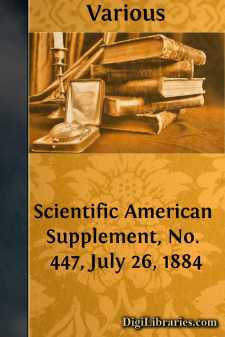Categories
- Antiques & Collectibles 13
- Architecture 36
- Art 48
- Bibles 22
- Biography & Autobiography 816
- Body, Mind & Spirit 145
- Business & Economics 28
- Children's Books 17
- Children's Fiction 14
- Computers 4
- Cooking 94
- Crafts & Hobbies 4
- Drama 346
- Education 58
- Family & Relationships 59
- Fiction 11834
- Foreign Language Study 3
- Games 19
- Gardening 17
- Health & Fitness 34
- History 1378
- House & Home 1
- Humor 147
- Juvenile Fiction 1873
- Juvenile Nonfiction 202
- Language Arts & Disciplines 89
- Law 16
- Literary Collections 686
- Literary Criticism 179
- Mathematics 13
- Medical 41
- Music 40
- Nature 179
- Non-Classifiable 1768
- Performing Arts 7
- Periodicals 1453
- Philosophy 66
- Photography 2
- Poetry 897
- Political Science 203
- Psychology 45
- Reference 154
- Religion 516
- Science 126
- Self-Help 85
- Social Science 82
- Sports & Recreation 34
- Study Aids 3
- Technology & Engineering 59
- Transportation 23
- Travel 463
- True Crime 29
Our website is made possible by displaying online advertisements to our visitors.
Please consider supporting us by disabling your ad blocker.
The Bay State Monthly, Volume 3, No. 2
by: Various
Categories:
Description:
Excerpt
SYLVESTER MARSH.
[THE PROJECTOR OF THE MOUNT WASHINGTON RAILROAD.]
By Charles Carleton Coffin.
There were few settlers in the Pemigewasset Valley when John Marsh of East Haddam, Connecticut, at the close of the last century, with his wife, Mehitable Percival Marsh, travelling up the valley of the Merrimack, selected the town of Campton, New Hampshire, as their future home. It was a humble home. Around them was the forest with its lofty pines, gigantic oaks, and sturdy elms, to be leveled by the stalwart blows of the vigorous young farmer. The first settlers of the region endured many hardships—toiled early and late, but industry brought its rewards. The forest disappeared; green fields appeared upon the broad intervales and sunny hillsides. A troop of children came to gladden the home. The ninth child of a family of eleven received the name of Sylvester, born September 30, 1803.
The home was located among the foot-hills on the east bank of the Pemigewasset; it looked out upon a wide expanse of meadow lands, and upon mountains as delectable as those seen by the Christian pilgrim from the palace Beautiful in Bunyan's matchless allegory.
It was a period ante-dating the employment of machinery. Advancement was by brawn, rather than by brains. Three years before the birth of Sylvester Marsh an Englishman, Arthur Scholfield, determined to make America his home. He was a machinist. England was building up her system of manufactures, starting out upon her great career as a manufacturing nation determined to manufacture goods for the civilized world, and especially for the United States. Parliament had enacted a law prohibiting the carrying of machinist's tools out of Great Britain. The young mechanic was compelled to leave his tools behind. He had a retentive memory and active mind; he settled in Pittsfield, Massachusetts, and set himself to work to construct a machine for the carding of wool, which at that time was done wholly by hand. The Pittsfield Sun of November 2, 1801, contained an advertisement of the first carding machine constructed in the United States. Thus it read:
"Arthur Scholfield respectfully informs the inhabitants of Pittsfield and the neighboring towns that he has a carding machine, half a mile west of the meeting-house, where they may have their wool carded into rolls for twelve and a half cents per pound; mixed, fifteen cents per pound. If they find the grease and pick the grease in it will be ten cents per pound, and twelve and a half mixed."
The first broadcloth manufactured in the United States was by Scholfield in 1804, the wool being carded in his machine and woven by hand.
In 1808 Scholfield manufactured thirteen yards of black broadcloth, which was presented to James Madison, and from which his inaugural suit was made. A few Merino sheep had been imported from France, and Scholfield, obtaining the wool, and mixing it with the coarse wool of the native sheep, produced what at that time was regarded as cloth of superior fineness. The spinning was wholly by hand....












